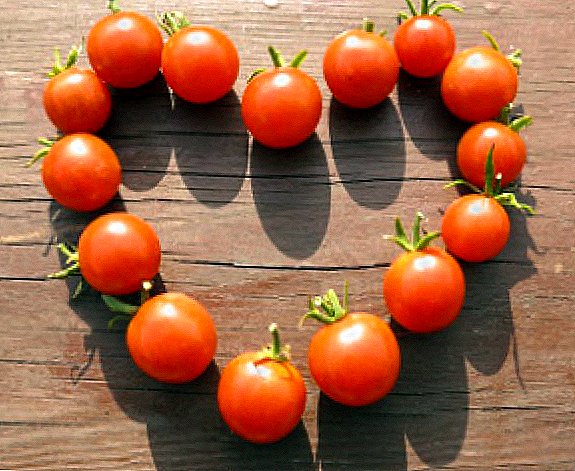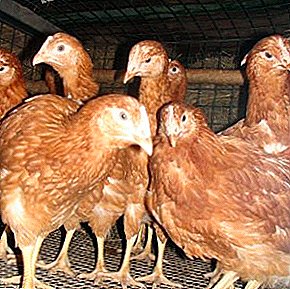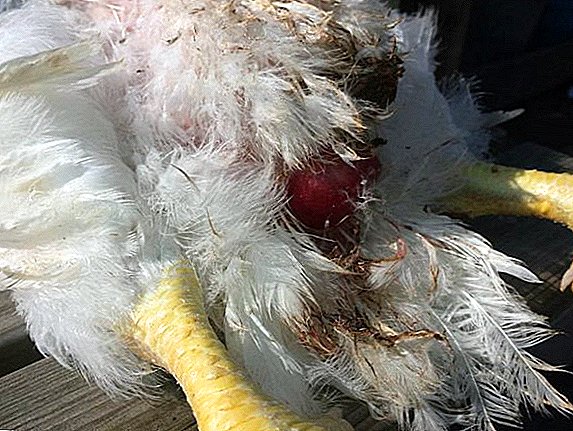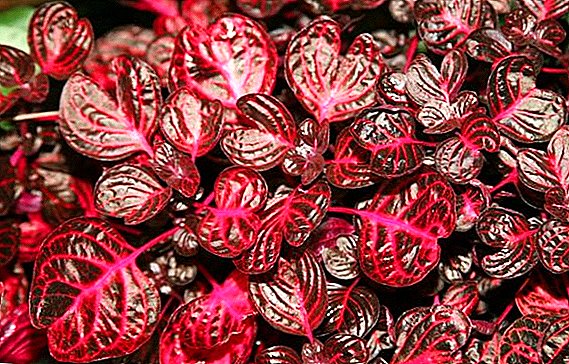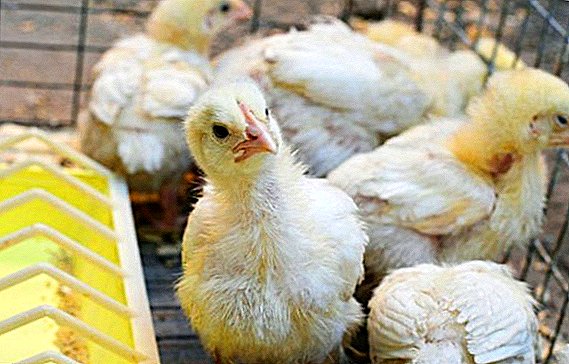 The main purpose of the content of broilers is to obtain a live weight as soon as possible. Before slaughter (45-55 days or more) the bird should weigh up to 3-5 kg. If by this time the feathered mass does not reach the desired mark, it is worth analyzing the reasons for the weight loss. Today we will look at the main factors that influence muscle gain in broiler chickens, as well as ways to solve and prevent this problem.
The main purpose of the content of broilers is to obtain a live weight as soon as possible. Before slaughter (45-55 days or more) the bird should weigh up to 3-5 kg. If by this time the feathered mass does not reach the desired mark, it is worth analyzing the reasons for the weight loss. Today we will look at the main factors that influence muscle gain in broiler chickens, as well as ways to solve and prevent this problem.
Possible reasons
Broiler chickens are quite capricious and whimsical in content, they quickly react to any change of conditions. Therefore, there are many reasons for poor broiler weight gain. So, errors in nutrition, conditions of detention, disease - all this has a negative impact on the increase in live weight.
Did you know? The name of broilers comes from the English verb to broil, that is, "fry on an open fire."
Temperature conditions
Broilers are very sensitive to temperature. Violation of the temperature standards of the content of broilers lead to poor bird immunity, as well as to large energy consumption for heating the body, and not weight gain. Therefore, low temperatures, as well as sudden drops, are unacceptable. 
Large area for walking
While for most breeds of chickens a spacious territory for walking is a prerequisite for maintenance, broilers can be called an exception. In a spacious area where they can move freely and freely, there is a high consumption of calories. Therefore, it is forbidden to give broiler chickens access to large areas.
Read also about the pros and cons of keeping chickens in cages, making cages with your own hands.
Problems in the diet
Unbalanced nutrition and lack of protein - Another very common cause of poor weight gain in broiler chickens. In principle, with low weight gain, the first thing that should be done by the owners is to reconsider the diet of the birds.  There may be several problems in the diet:
There may be several problems in the diet:
- birds may not get enough food at one feeding and simply be hungry;
- the number of feedings may not match the age needs of chickens;
- the diet may be poor, unbalanced, deficient or oversupply of various nutrients;
- in a bird, the appetite may decrease or disappear altogether as a result of transfer from one food to another;
- feathered water may lack clean drinking water for a normal appetite.
Learn more about broiler feeding: PC-5 and PC-6 feed, nettle supplements, as well as the manufacture of feeders and drinkers.
Also very often broiler species can gain weight poorly from a lack of protein in the diet. If the owners feed the chickens independently prepared mash, the weight loss becomes a frequent occurrence. After all, at home it is very difficult to competently make a diet and in the right proportion to pick up all the mineral and vitamin substances and other nutrients necessary for birds.
Video: stunting due to improper diet
Special breed broiler
Breeding chickens are divided into 2 categories: with a high rate of gaining muscle mass and with a low speed. In the latter case, the birds gain weight over a longer time. If you didn’t pay attention to this moment when choosing a breed, you may have an unpleasant surprise in the form of a slow set of muscle mass. Be sure to ask the breeders such a characteristic of the breed.
We advise you to read about the characteristics and content of broiler crosses ROSS-308, ROSS-708, Cobb-700.
Digestive problems
Broilers are extremely sensitive to feed, especially newborn chickens. Food for them should be of the highest quality and fresh. Poor, inappropriate, old feed (rotted or moldy) can cause metabolic disturbances, reduced or increased acidity and dyspepsia. When dyspepsia occurs a violation of digestion in the stomach, there is a heaviness, pain.
At the same time the bird can refuse food, it becomes apathetic, inactive. One of the symptoms of dyspepsia is abnormal stool. If you observe such a clinical picture, you need to take immediate action. In this condition, ascorbic acid, glucose, a solution of potassium permanganate helps well.  The second problem is helminth infections. The most frequent are such: capillaria, ascariasis, prostagonidosis. It is dangerous to give veterinary drugs to chickens on their own without a definite diagnosis. To do this, it is necessary to examine the feces with the methods of helminthic otoscopy and various samples to determine the type of parasites and select the appropriate drug.
The second problem is helminth infections. The most frequent are such: capillaria, ascariasis, prostagonidosis. It is dangerous to give veterinary drugs to chickens on their own without a definite diagnosis. To do this, it is necessary to examine the feces with the methods of helminthic otoscopy and various samples to determine the type of parasites and select the appropriate drug.
Important! Confirm helminthiasis can only (!) According to the results of laboratory studies of litter.
After anthelminthic treatment, it is necessary to endure a 3-day quarantine in chickens, and all litter during this time should be burned.
Problem Solving and Prevention
If the reason for the weight loss are not the features of the selection, then all other factors can be corrected. Establishing conditions of maintenance, nutrition and the habit of keeping notes with a description of all the nuances of bird care will give you a wonderful experience and help you avoid this problem in the future.
Conditions in the hen house
Analyze the conditions of detention - here it is necessary to adjust the temperature, airing, estimate the area for walking birds. If you keep broilers year-round, you should definitely take care of the weatherization and the organization of heating in the house.  The main nuances in the arrangement of the chicken coop:
The main nuances in the arrangement of the chicken coop:
- The room should not be cracks, drafts.
- The temperature should be in the range of 20-22 ° C for adults. Newborn chickens are kept at 30 ° C, and after reaching the age of one week, the temperature is lowered by 2-3 ° C every week. The temperature regime for monthly individuals and more adult broilers is the same. In winter, the house should be heated and insulated. Infrared lamps can be used to maintain the temperature.
- The house must be well ventilated, since respiratory and digestive diseases can develop in a stale room and the metabolism is also disturbed.
- Take care of the lighting. Ideally, it should be red, soft. With such lighting, chickens have lower levels of stress and minimal risk of snapping. Day length should be in the range of 14-17 hours.
- For broilers optimal cellular content. Sometimes the bird needs to be released to fresh air, while at 1 square. m area for walking should have 20 chickens or 10 adult chickens.
- It is extremely important for the health of birds to constantly maintain cleanliness in the house!
Find out if broilers carry eggs at home.
Diet correction
Next, analyze exactly what you feed and water the birds, what additives you give them. It is optimal to give the broiler breeds a combined purchased feed, as they are already balanced in composition and you will not have to bother with thinking about the diet. If chickens do not go out into the fresh air and do not receive sunlight, be sure to give vitamin d.  When using household mixers, you should definitely supplement them with premixes: vitamin-mineral complexes, balanced in composition of all substances. Also, the diet of grain must be diluted with greens, vegetables and fruits.
When using household mixers, you should definitely supplement them with premixes: vitamin-mineral complexes, balanced in composition of all substances. Also, the diet of grain must be diluted with greens, vegetables and fruits.
Did you know? Broilers of the 1950s and modern breeds are completely different in appearance feathers. So, in the middle of the last century, a 2-month-old chick weighed about 2 kg, and now there are species gaining about 6 kg during this time! Thanks to the painstaking selection, the feathery steel is 3 times faster to gain muscle mass.
Rules of feeding and watering
Fundamental rules:
- Chickens should have constant (!) Access to clean and fresh drinking water.
- When feeding chickens and growing individuals, it is necessary to adhere to the recommended volume of servings and number of feedings in accordance with the age of broilers. So, before the first week of life, 8-time feeding is necessary for the feathery, from the second week - 6 times a day, even after a week 4 feedings per day are enough.
- Different types of combined feed may have a different taste (it is determined by the composition). Birds are very sensitive to the change of feed, so you can not abruptly replace the old feed with a new one. It is best to interfere with food in equal parts, and after a while add less and less old food to ensure a smooth transition to a new food.

Weight and height control according to regulations
From the first days of a broiler chicken, you need to keep records of weight control, as well as make all the data on the conditions of detention and feeding.
Record changes in weight should be on weeks, also need to make information about the change of feed, temperature, number of feedings.
Important! It is impractical to fatten the birds after 80-90 days. First, after this period, weight gain no longer occurs, and secondly, the quality and characteristics of meat begin to decline.
Approximate norms of chick weight:
- newborns - 40 g;
- 2 weeks - 0.2-0.25 kg;
- 3 weeks - 0.8 kg;
- 4 weeks - 1.5-1.6 kg;
- 8 weeks - 3 kg or more.
Reviews of poultry farmers about solving the problem of poor growth of broilers


Ensuring acceptable conditions of maintenance will avoid problems in the form of poor weight gain. But before you understand all the nuances of broiler care, you can make a lot of mistakes. Hopefully, our article has helped you understand the causes of weight loss and learn about preventive measures that should be taken.


